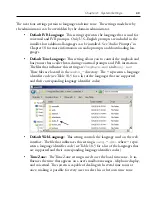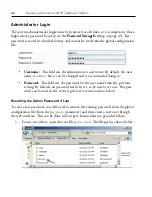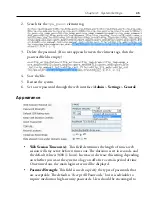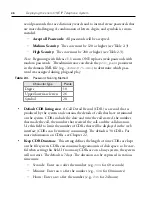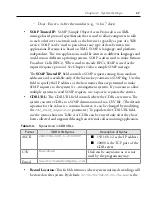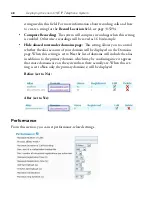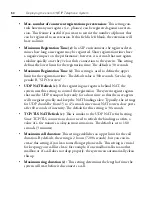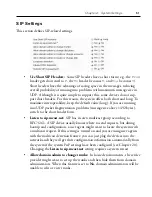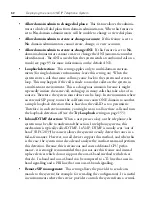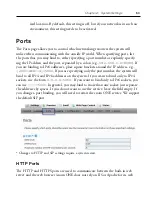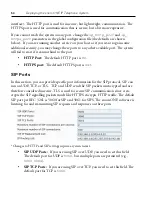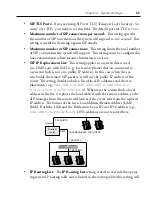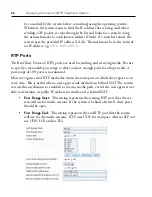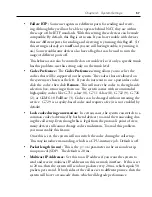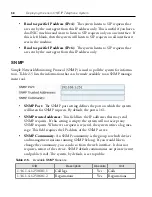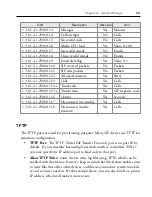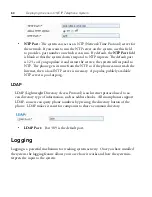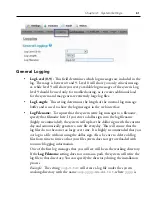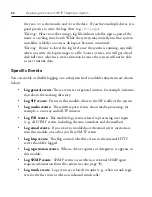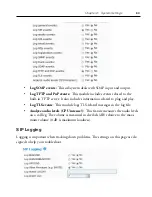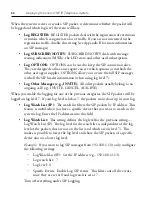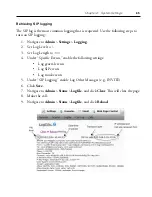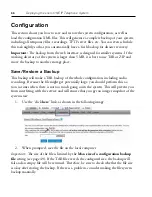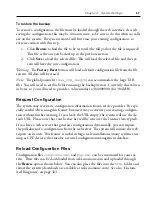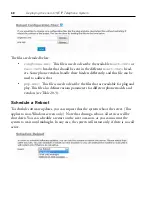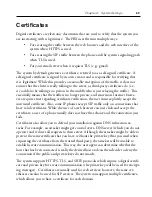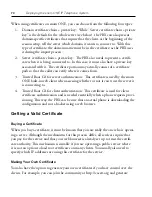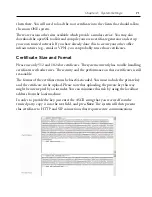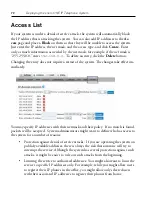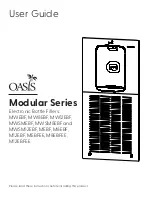
Chapter 2: System Settings
57
•
Follow RTP:
Some user agents use different ports for sending and receiv-
ing. Although they will not be able to operate behind NAT, they are within
the scope of the IETF standards. With this setting, these devices can be made
compatible. By default, this flag is set to
on
. If you have trouble with devices
that use different ports for sending and receiving, try turning this flag off. (If
this setting is already set to
off
and you are still having trouble, try turning it
on.) Some troublesome devices also have a flag that can be used to turn the
usage of different ports off.
This behavior can also be controlled on a trunk level, so if only a specific trunk
has this problem, use this setting only on the trunk level.
•
Codec Preference:
The
Codec Preference
setting allows you to select the
codecs that will be supported on the system. The codecs that are allowed on
the system are shown at the left. If you do not want to use a particular codec,
click the codec, then click
Remove
. This will move the codec to the right-side
selection box, removing it from use. The system comes with recommended
high-quality codecs like G.711 µ-law (0), G.711 A-law (8), G.722 (9), G.726
(2), or GSM 6.10 FullRate (3). Codecs can be changed without restarting the
service. G.729 is a royalty-based codec and requires a fee (it is not enabled by
default).
•
Lock codec during conversation:
In certain cases, the system can switch to a
common codec (advertised by both end devices) to avoid the transcoding dur-
ing the call setup. Even though this is legal from the protocol’s point of view,
many devices still cannot change codecs midstream. To avoid this problem,
you must enable this feature.
Once this is set, the system will not switch the codec during the call setup.
This may introduce transcoding, which is a CPU-intensive job. Default is off.
•
Packet length (in ms):
This is the
ptime
parameter in the session descrip-
tion protocol (SDP). The default is 20 ms.
•
Multicast IP Addresses:
Set this to an IP address if you want the system to
send and receive multicast IP addresses on this network interface. If this is set
to 20 ms, then the system will send out packets every 20 ms, which equals 50
packets per second. If both sides of the call are set to different ptimes, then the
system will have to transcode them, which will degrade performance.
Содержание ONE IP
Страница 4: ......
Страница 19: ...Part I Getting Started...
Страница 20: ...Part I Getting Started...
Страница 47: ...Part II Administering the System...
Страница 48: ...Part II Administering the System...
Страница 195: ...Deploying the snom ONE IP Telephone System 526...
Страница 201: ...Deploying the snom ONE IP Telephone System 532 Figure C 1 Trunk Settings for Configuration with Exchange 2007 2010 UM...
Страница 223: ......

